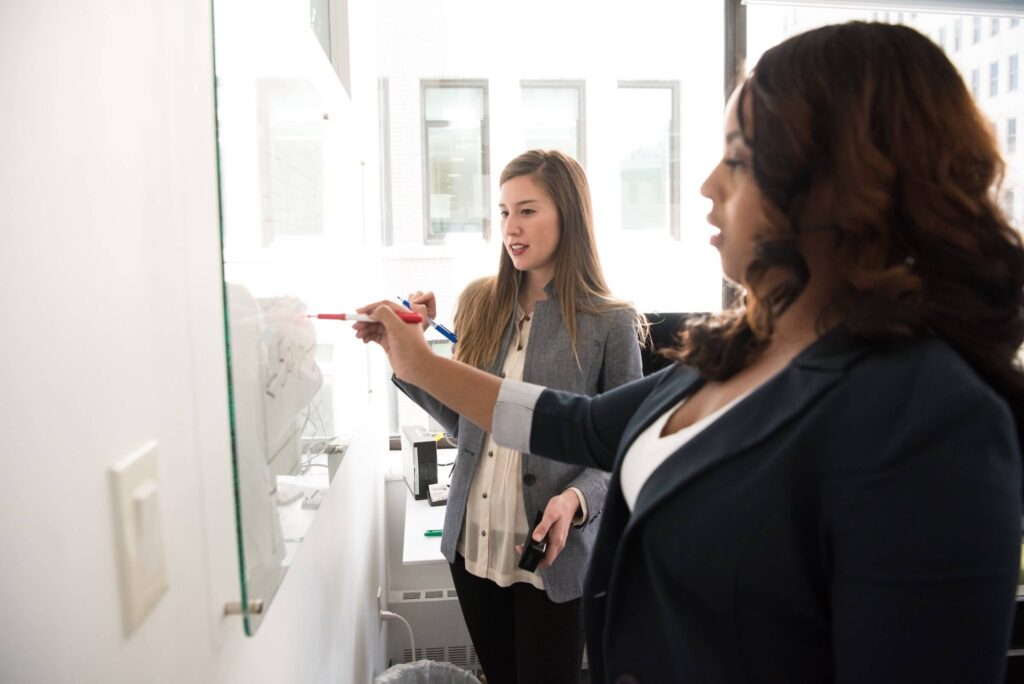When you think about the most impactful moments of your educational experience — be that as a high school or college student, or as a professional — your favorite teachers likely come to mind.
But what, exactly, did those teachers do to make your educational experience exceptional?
In TechKnowCon’s recent Roundtable, CEO and Founder of effectivEDU Sean Dagony-Clark hosted an insightful presentation on how to lead like your favorite teacher. Today, we are showcasing the key points from Sean’s presentation, including several actionable takeaways you can apply within your own organization’s learning environments.
What makes a teacher great?
To become a better leader or manager, start by considering your best and favorite teachers.
Teachers play formative roles in our lives, with the best teachers setting an example that can be applied in many environments beyond the classroom. Truly great teachers recognize the individuality of their students and can effectively apply scientific logic from fields like psychology, neuroscience, and cognitive science to create optimal learning environments for those students.
For leaders and managers to better understand this, it is crucial to implement three main goals:
- Build a supportive working and learning environment that provides psychological safety
- Create meaningful and impactful outcomes for your learning opportunities
- Establish the right opportunities to achieve transformative learning
Successful workplace learning starts with psychological safety
“By leveraging some of the ways that teachers create supportive learning environments,” Sean states, “we can actually improve the way that we lead and manage.”
– Sean Dagony-Clark
Workplace learning is vital for creating fully-enabled employees who feel confident in their skills and decisions — but not all workplace learning environments are conducive to this goal.
As Sean points out, too much pressure can “shut down creative thought.” While workplace environments almost always include some level of pressure placed on employees, that pressure needs to be strategic.
When cushioned by the right amount of support and safety, pressure can enhance performance.
Establishing this support and safety begins by addressing the needs of your employees and determining whether they feel psychologically safe in your workplace learning environment.
However, Sean makes it clear that establishing psychological safety is not about lowering standards:
“This is not about being nicey-nice, this is not about reducing your standards — it’s about creating a high-performing environment where people are held to a high bar but where employees can operate creatively and without fear. And, basically, that creates trust and that’s what you have in a good classroom.”
If your employees can comfortably act in the role of students without fear of making mistakes, asking questions, or experimenting with different ideas, this can be the key to fostering a growth mindset.
How intrinsic & extrinsic motivators influence the growth mindset
A workplace mindset is all about how your employees approach a challenge.
Generally, two categories of mindsets exist — the growth mindset and the fixed mindset.
A growth mindset is focused on meeting challenges head-on, while a fixed mindset favors turning away from challenges to focus on different goals. This comes back to the idea of psychological safety — if an employee feels secure in a workplace learning environment, they are more likely to adopt a growth mindset that encourages them to embrace the process of learning new things to overcome challenges.
However, psychological safety alone is not the only factor influencing an employee’s mindset.
In any workplace setting, both intrinsic and extrinsic motivators are at play. An intrinsic motivator is internal, such as an employee’s personal passions that drive them to do their best work, while an extrinsic motivator is external, such as the salary or benefits provided to an employee by their employer.
Both intrinsic and extrinsic motivators matter when it comes to workplace learning but it is the focus on the intrinsic value of a person’s education and work that can turn into long-term success.
As Sean puts it, creating a growth mindset requires you to give your employees meaningful tasks that build ownership and self-efficacy, with Sean stating that employees who are empowered to make impactful and meaningful decisions “tend to feel more intrinsically motivated.”
Embracing mistakes to achieve impactful outcomes
“From a learning perspective, wrong is better than right.”
The concept of psychological safety stems from a leader’s ability to embrace mistakes, as they can “illuminate misconceptions and misunderstandings that can be corrected.” By embracing mistakes in this way, not only do employees learn better but they also have a greater willingness to test out different ideas without the fear or threat of what may happen if they are wrong.
Moreover, leaders need to take the time to set clear expectations for employees that set the boundaries within the learning environment. When an employee knows what to expect, they can act with more self-agency, especially when it comes to enhancing their skills and decision-making.
What ultimately matters most is that leaders set goals that are specific, measurable, and observable.
By ensuring each of these three factors is at play in any given goal, leaders can also perform more meaningful assessments that provide constructive feedback and improved learning opportunities.
Knowing the power of stress & how to properly apply It
As we have discussed, psychological safety is the crux of successful workplace learning environments.
We can think of this in the context of the learning zone model which defines learning and growth into three main zones:
- The Comfort Zone: The comfort zone is where a learner is most comfortable. In the comfort zone, a person can perform their work without external guidance. However, this also means that no active learning is taking place within this zone.
- The Stretch Zone: The stretch zone is where the best learning occurs. In the stretch zone, learners are taken outside of their comfort zones but provided with the right level of personalized support from experts to learn effectively.
- The Fear Zone: The fear zone is the place in which no effective learning can take place. This zone can push learners too far past their comfort zone, leading them to a state of fear and panic. When leaders begin to notice their team members exhibiting signs of fear, panic, or distress, this is a crucial sign that more support is needed.
As Sean states:
“We don’t want to just push through the fear zone because, guess what, there’s nothing on the other side except more fear. Recognizing that and pulling people back to [the stretch zone] is actually really critical as a leader or manager.”
Sean shared the latest research by Kara Baskins as another great resource to help you create a learning culture within your organization.
Fostering transformative cultures of learning for your employees
Creating a workplace environment that is a transformative culture of learning comes down to combining all of the above-discussed factors — employees need psychological safety, both intrinsic and extrinsic motivators, and the freedom to make mistakes to reach their true potential.
What makes your workplace learning initiatives the most transformative is understanding how to balance each of these elements in a way that is relevant and valuable to your team.
“Finding ways to support [learners learning by offsetting their obligations can be a great way to show the value that you place on learning,” Sean states. “And that can lead the shift to a learning culture.”
For example, an extrinsic motivator like a learning stipend can encourage employees in the short term, while ultimately helping to build up their intrinsic interest in learning new skills in the long run.
The major takeaway here is that leaders must act as support units for their teams to achieve true employee enablement. By doing so, leaders and managers can establish the best possible environments for both team and individual learning, all while creating value and growth opportunities along the way.







